In training operations, it is regularly noticed that the danger of reversing airflow direction and thereby reversing smoke propagation during fire operations in tunnels is generally underestimated. That is why we address this topic, which is extremely important for the safety of the emergency personnel, in this article and show how the risks of a sudden reversal of airflow can be reduced.
Mostly stable airflow direction in road tunnels
Fires in tunnels always establish an upstream side and a downstream side. On the downstream side, the smoke discharges, which is why difficult operating conditions usually exist here. On the other hand, good working conditions can be expected on the upstream side because fresh air is constantly entering. In road tunnels with ventilation systems, the flow direction results from the control of the fans, which is why it mostly remains stable throughout the entire operation.
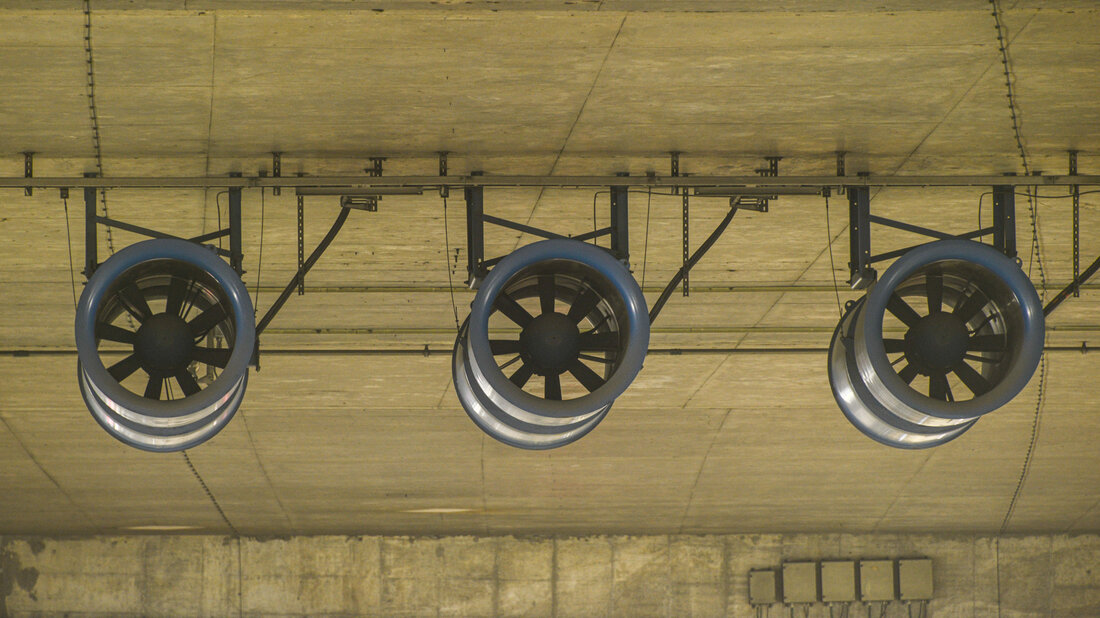
Airflow reversal in railway tunnels
Many railway tunnels do not have a stationary ventilation system. Here, the direction of smoke propagation results from a complex interplay of moving vehicles, thermal effects of the fire and natural ventilation. If a train comes to a standstill in the tunnel due to a fire, the smoke will initially propagate in the direction of the previously moving train. If the effect of the airstream previously generated by the train subsides, the direction of airflow can reverse. Then the previous upstream side becomes the downstream side.
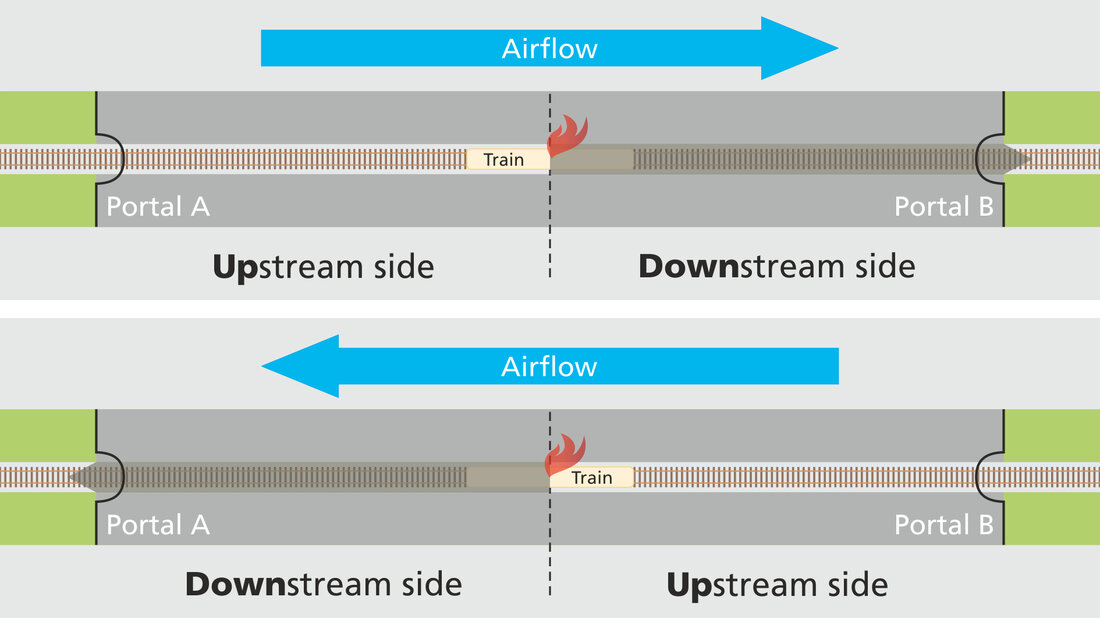
Multiple reversing of the smoke propagation is possible
The unpleasant effect of a sudden airflow reversal was experienced by firefighters, for example, in the Simplon Railway Tunnel fire (CH/I) in June 2011. Here, the airflow reversal was probably triggered by the piston effect of a diesel locomotive that was supposed to pull part of the damaged train out of the tunnel during firefighting. During the fire of a freight wagon in the Leinebusch Tunnel (D) in March 1999, the direction of airflow even reversed several times due to natural atmospheric pressure fluctuations. Even in road tunnels, airflow reversal cannot be completely ruled out. In May 2018, emergency personnel in the San Bernadino Tunnel (CH) were in great distress when smoke was suddenly directed straight at them due to a misunderstanding in the control of the ventilation system.
Secure retreat
Because of the possibility of an airflow reversal at any time, a breathing apparatus must also be worn when entering on the smoke-free upstream side, but without having to put the facepiece on. The firefighters should then penetrate only as far as they have enough breathable air to retreat through the smoke in the event of a sudden reversal of the airflow direction.
The following considerations were made by the Didactics and Development Team (DDT) of the International Fire Academy: Taking the compression factor into account, a SCBA with two 6.8-litre cylinders and a filling pressure of 300 bar provides around 3 700 litres of breathable air. With an air consumption of 50 litres per minute, the calculated duration of operation is about 74 minutes. If half of the breathing air supply is to be used as a safety reserve, air is available for 37 minutes of retreat. At a walking pace of 25 metres per minute, 925 metres can be covered in this time. Based on this calculation, the DDT has defined the following orientation value: If, when entering the smoke-free area, it is necessary to retreat through smoke because of a sudden reversal of the airflow direction, a return distance of about 1 000 metres should be manageable with full cylinders. The values are to be calculated accordingly for single-cylinder devices or cylinders with other volumes.
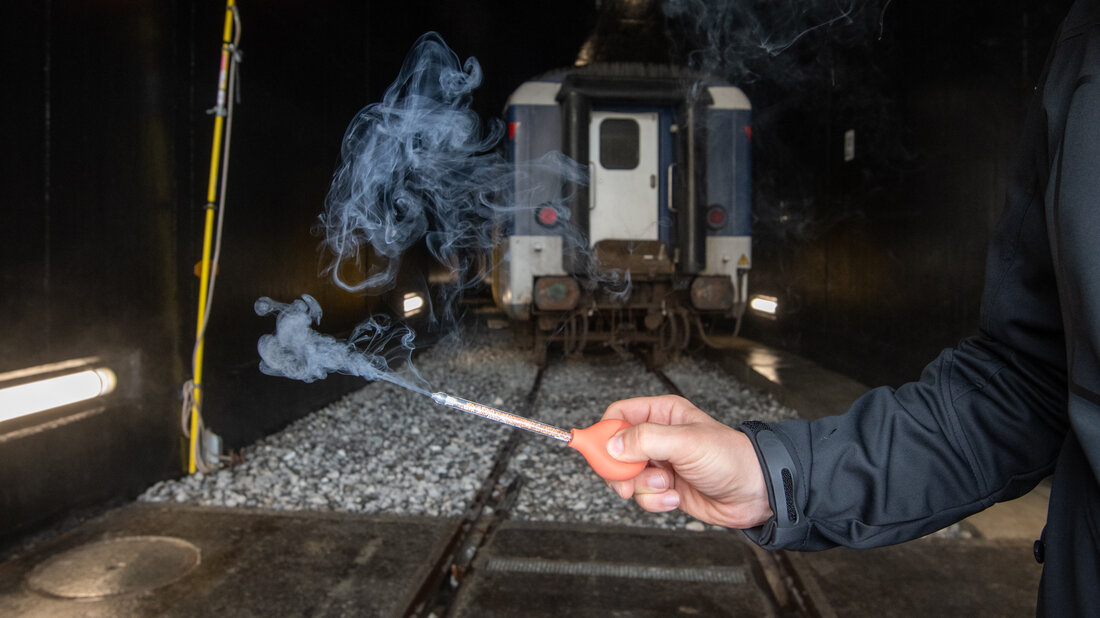
Consequently, the firefighters must constantly check how far they have already penetrated the tunnel. The kilometre markings are unsuitable because the team would then have to remember at which kilometres they started. This can be difficult under stress. It is why the International Fire Academy recommends using the escape route signs as a guide. They show the penetration depth already achieved in plain text.
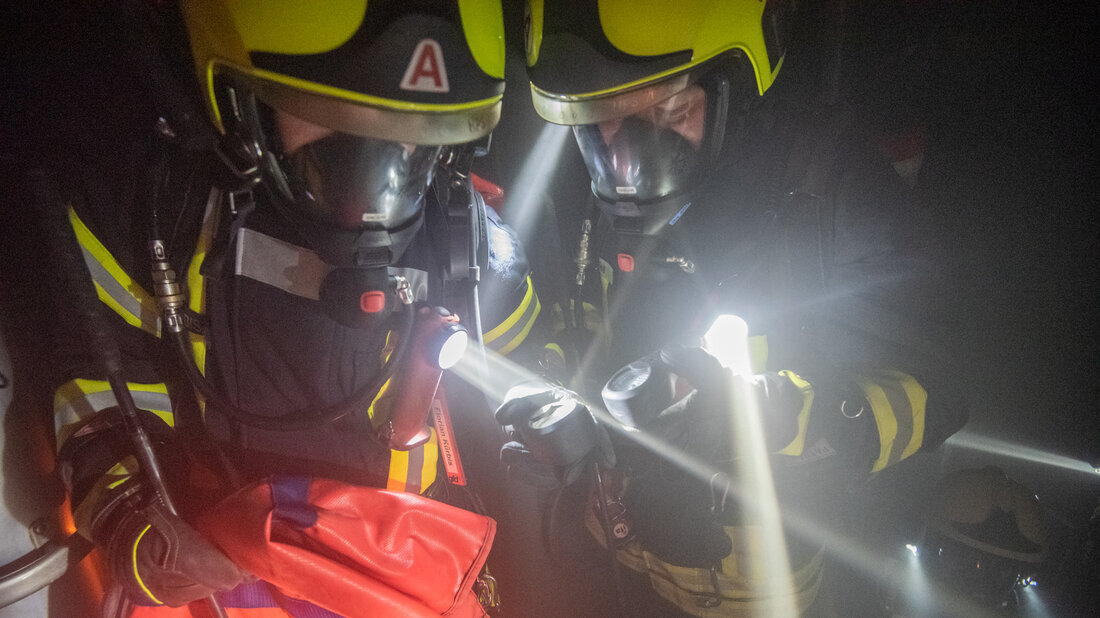
However, it becomes more difficult when a team proceeds from a fire and rescue train, for example, whose rescue car is considered a secured space. Here the team has to remember which distance the nearest escape route sign shows and estimate at which displayed distance they have to turn back.
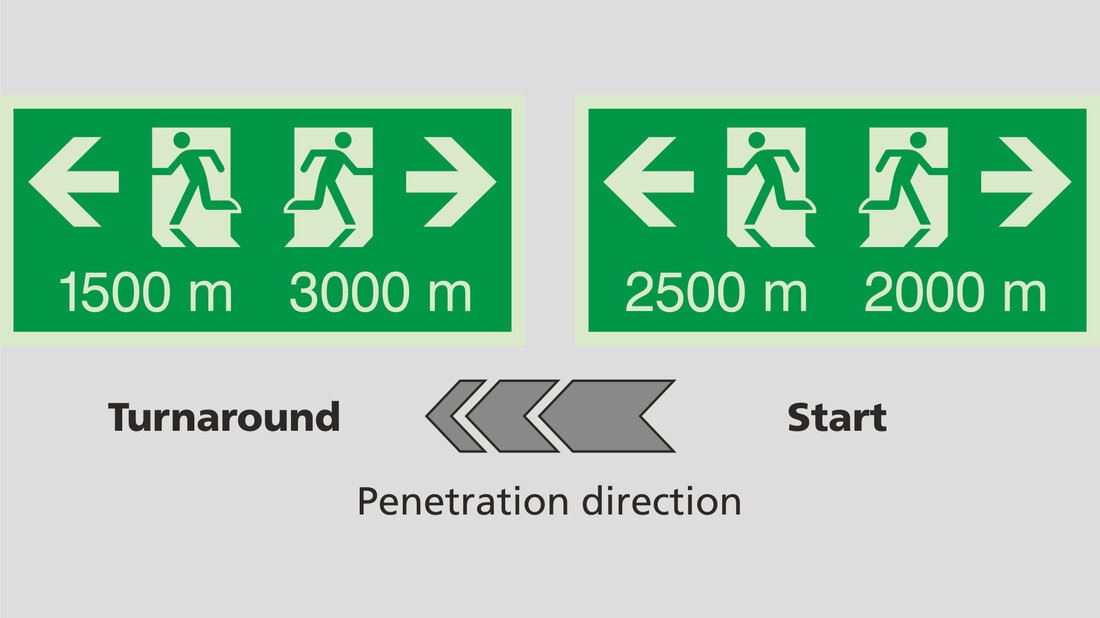
A topic for operational planning
The 1 000-metre limit is an orientation value. Of course, a team will not turn back exactly after one thousand metres when only a few metres from its target, especially since there is a safety margin incorporated into this limit. It is crucial to raise awareness towards the risks. Even if the conditions on the upstream side are as good as they can be: There is no guarantee that this will remain this way. If the smoke suddenly turns, for whatever reason, the team must be able to get to safety. Therefore, we recommend that this danger be addressed in training and clarified in preparation for deployment, for example, at what distances the escape route signs of one's own tunnel are mounted or what other distance information can be used, such as sector markings.
Also, a topic of deployment preparation should be the use of large mobile fans, which, while not reversing the direction of airflow, can be used to stabilise it in some circumstances to reduce the likelihood of a reversal.
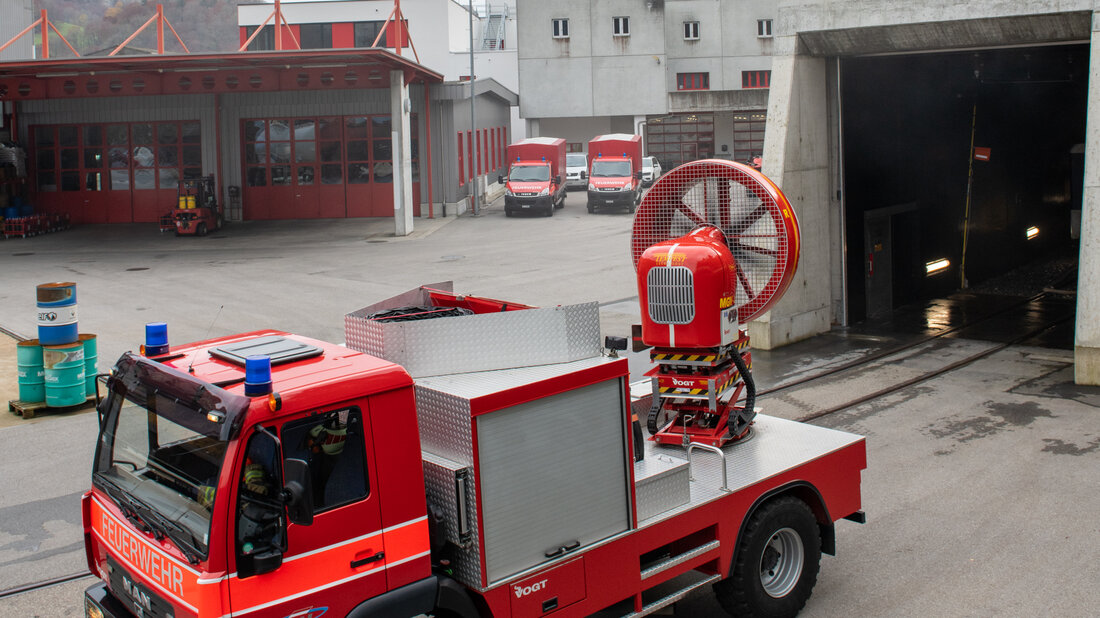
Further information on reversing smoke propagation and other hazards can be found in our textbook «Firefighting operations in railway tunnels».


